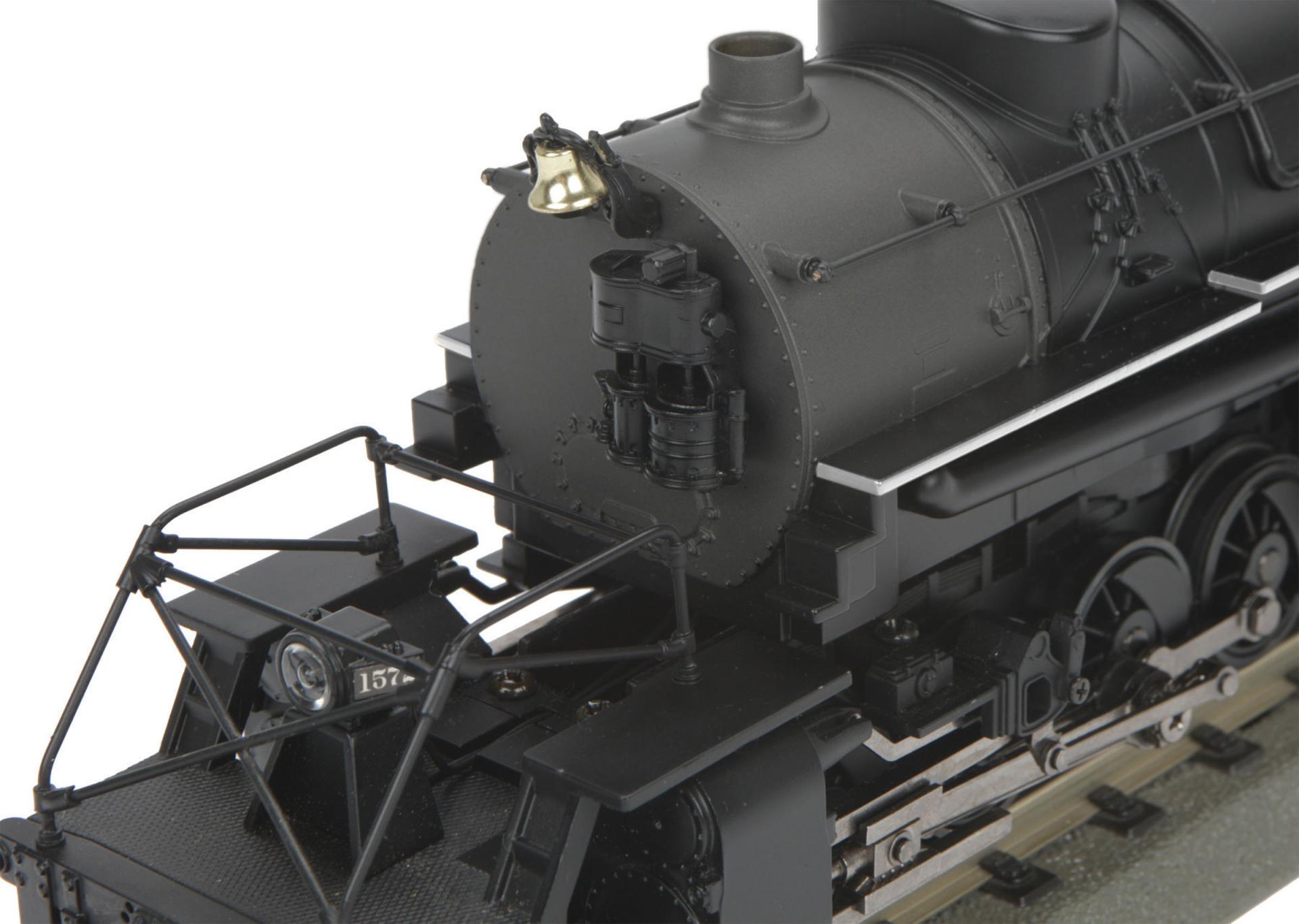




Chesapeake & Ohio 2-8-8-2 Imperial USRA Steam Engine w/Proto-Sound 3.0
Overview
In 1874, Swiss technical writer Anatole Mallet invented the articulated locomotive, coupling two sets of driving wheels under one boiler. Mallets used their steam twice: the rear cylinders were fed high-pressure boiler steam, and the larger front cylinders used low-pressure steam exhausted from the rear cylinders. In 1909, Baldwin delivered the first 2-8-8-2 Mallets to the Southern Pacific, where they became the precursors of the SP's famous Cab Forwards. By World War I, Mallet 2-8-8-2s were in use across the United States, particularly on mountain routes where they replaced two or three smaller engines.
When the USRA took over the railroads during the War, it used the Norfolk and Western class Y-2 2-8-8-2 as the starting point for the largest of its 12 standardized steam locomotive designs. (For more on the USRA, see page xx.) USRA designers turned the Y-2, which had been a disappointing design for the N&W, into a highly successful freight engine. Although Mallets later fell out of favor with most railroads, in favor of faster "simple" articulateds that delivered high-pressure boiler steam to all four cylinders, the USRA's largest design proved to be one of its most enduring. In 1952, a Norfolk and Western Y6b, a direct descendant of the original USRA design, was the last mainline steam engine built in the United States.
The USRA 2-8-8-2 returns to the RailKing lineup in 2014, upgraded with Proto-Sound 3.0 and wireless drawbar and featuring a full complement of Imperial-level details: legible builder's plates, painted backhead gauges, cab interior light, glowing firebox, engine crew, tender truck safety chains, and a real coal load in the tender.
Features
- Die-Cast Boiler and Chassis
- Die-Cast Tender Body
- Authentic Paint Scheme
- Real Tender Coal Load
- Die-Cast Locomotive Trucks
- Engineer and Fireman Figures
- Metal Handrails and Decorative Bell
- Decorative Metal Whistle
- Metal Wheels and Axles
- Remote Controlled Proto-Coupler
- Prototypical Rule 17 Lighting
- Constant Voltage Headlight
- Operating Firebox Glow
- Lighted Cab Interior
- Operating Tender Back-up Light
- (2) Precision Flywheel Equipped Motors
- Synchronized Puffing ProtoSmoke System
- Locomotive Speed Control In Scale MPH Increments
- Wireless Drawbar
- Onboard DCC Receiver
- Proto-Sound 3.0 With The Digital Command System Featuring: Freight Yard Proto-Effects
- Unit Measures:25" x 2 1/2" x 3 3/4"
- Operates On O-31 Curves Steam DCC Features
- Headlight/Tail light
- Bell
- Whistle
- Start-up/Shut-down
- Passenger Station/Freight Yard Sounds
- All Other Lights (On/Off)
- Master Volume
- Front Coupler
- Rear Coupler
- Forward Signal
- Reverse Signal
- Grade Crossing
- Smoke On/Off
- Smoke Volume
- Idle Sequence 3
- Idle Sequence 2
- Idle Sequence 1
- Extended Start-up
- Extended Shut-down
- One Shot Doppler
- Coupler Slack
- Coupler Close
- Single Horn Blast
- Engine Sounds
- Brake Sounds
- Cab Chatter
- Feature Reset
- Labor Chuff
- Drift Chuff
